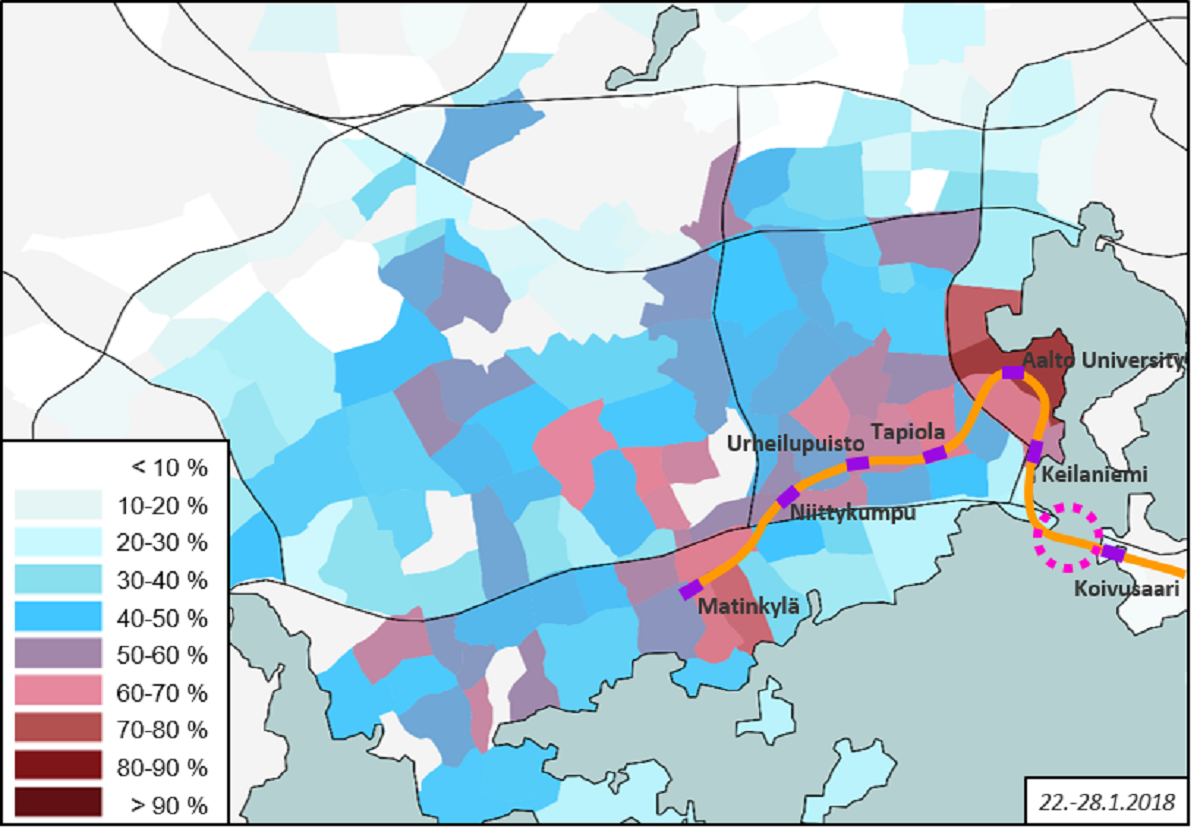We use cookies to personalise content & improve our services. By using our site, you consent to our Cookie Policy. Read more
West Metro changed the way that Espoo residents move – Telia’s new data service screened millions of trips


Tapio Levä, who is responsible for Telia's data and analytics business, rushes to our meeting straight from a customer meeting. A short while ago a representative of one of the largest retailers in the country had been sitting across the table from him. For the retailer’s decision-makers, it is critical to understand the flow of people near their own stores.
Levä and his team have been building a new kind of data service for companies and communities since the beginning of the year. The Telia Crowd Insights service is based on data collected from the mobile network in order to describe the movements of crowds in a certain place at a certain time. It was this data that HSL wanted to utilize to find out as accurately as possible how eagerly Espoo residents have started to use the West Metro. More than 700,000 trips are made within, from and to Espoo every weekday.
“The extension of the Metro to Matinkylä has increased the share of public transport in travelling between Espoo and Helsinki and, correspondingly, reduced the number of private cars on the Länsiväylä and Turunväylä motorways,” states HSL in their media release. You can find the detailed results of the pilot project here.
Levä is pleased and proud that the cooperation with HSL has already yielded results that business planners and decision-makers can use in their own work.
“This has been a very valuable experience for us in many ways. Cooperating with HSL and the transportation consulting company Strafica has taught us a huge number of new things, and it has also proved that the new data can be useful even in challenging projects,” says Levä.
“Crowd Insights is particularly suitable for examining the overall demand for traffic between different areas and the direction and times of travel regardless of the mode of transport,” concludes Strafica’s CEO Markku Kivari.
CONTINUOUS DATA REQUIRES NEW OPERATING MODELS
Telia has launched more than ten customer projects over the past six months. Towns and cities, in particular, have been eager to use the new service, when they have wanted to look into different transport solutions or the attractiveness of the city centre. In addition to HSL, Levä keeps mentioning Tampere, Lahti, Jyväskylä and Imatra, for example.
“Benefiting from the new data source and continuous data requires changing the way we operate. In the past, many organizations have based their operations on statistics that are updated once a year, for example, but now they have constantly updated data available on the flow of people,” says Levä.
According to Levä, companies and the public sector have from the outset been very interested in hearing about the new data service, which has been constantly shaped for the better by numerous pilot projects during the year.
“We now understand much better how data obtained from the mobile network is transformed into services that are meaningful and valuable to customers with very different needs. The service will be provided widely to Finnish businesses and cities during the next year,” Levä concludes.
Janne Kaijärvi